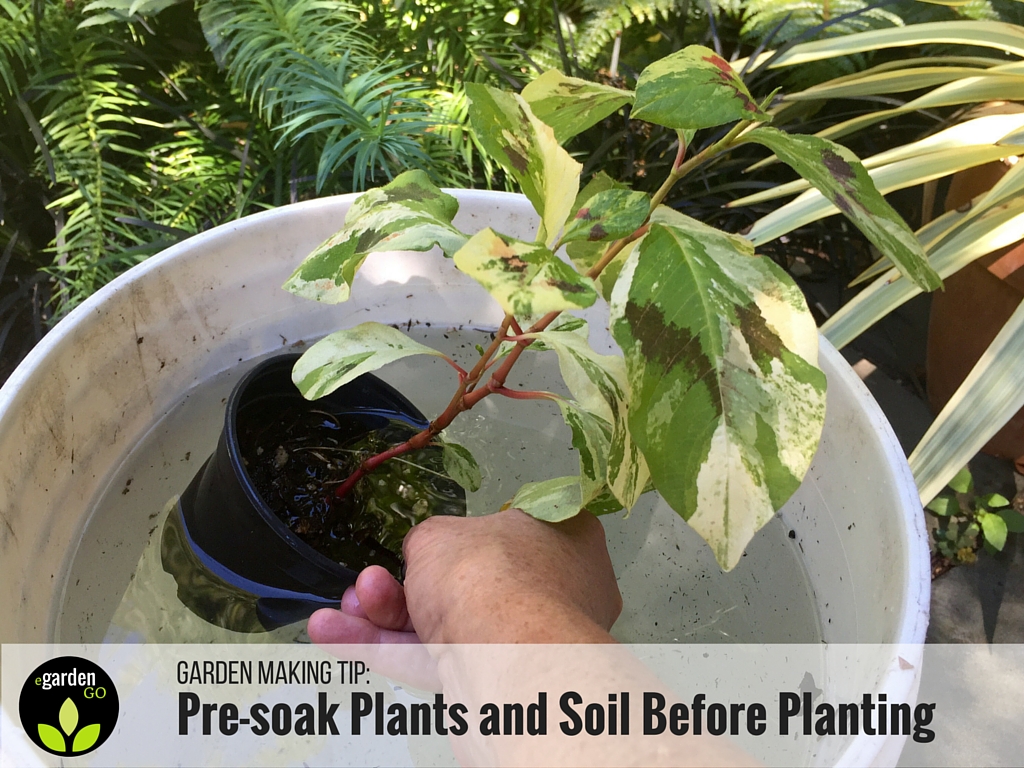Have you ever pulled a dead plant out of the ground to find a dry, chalky root ball and thought, "Geez, how'd that happen? I watered the heck of it!" Well, there's a simple solution.
When you're about to plant, make sure the plant's root ball and surrounding soil are well-saturated. This is especially important when planting in hot weather and/or when it's been a while since it rained. And here's why: if you install a plant with a dry root ball, you can water it all you want, but water will never pass from the surrounding soil into the root ball. The soil in the root ball is hydrophobic; repelling water versus absorbing it, and the plant dies of thirst.
Here's how to avoid this problem:
1. Soak the root ball.
Before you plant, fill a 5-gallon bucket with water, then submerge your plant (still in its nursery pot) into the water until it's fully saturated. You'll know it's saturated when you stop seeing bubbles percolating up from the plant's roots.
2. Soak the hole.
Dig a hole twice the size of your rootball, fill it with water, and allow it to drain; repeat if it drains quickly. In heavy clay soils, this may take a while, so you'll want to be patient. This step is especially important during periods of hot, dry weather when the surrounding soil moisture is going to be low. Once you've thoroughly saturated the surrounding soil, place your pre-soaked plant into the planting hole.
3. Fill in the hole and mulch.
After the excess water drains away, backfill the hole with soil and water it again to settle the soil and remove any air pockets around the roots. Finally, create a basin around the crown of the plant and apply a layer of mulch.
Bonus Tip #1: For larger plants that won't fit in a five-gallon bucket, keep your eye on the goal and improvise an alternate method to ensure you've thoroughly saturated the plant in its nursery pot. Soak the hole as you would for a smaller plant, but in this case it's especially important.
Bonus Tip #2: Be sure to wait for the water to drain before tamping the soil around the root ball. You don't want to make a "mud pie" in the planting hole, as it ruins your soil structure. It's a bit like Goldilocks: the soil should be not too wet, not too dry, but juuuuust right.
If you use this simple technique, and avoid installing plants during the inevitable periods of extreme heat that we experience, you can continue to add plants to your Pacific Northwest garden during the summer. Now, what to plant? Explore plants and planting combination ideas on the eGardenGo site, I'm sure you'll find plenty of inspiring ideas to keep you busy gardening.
advertisement




